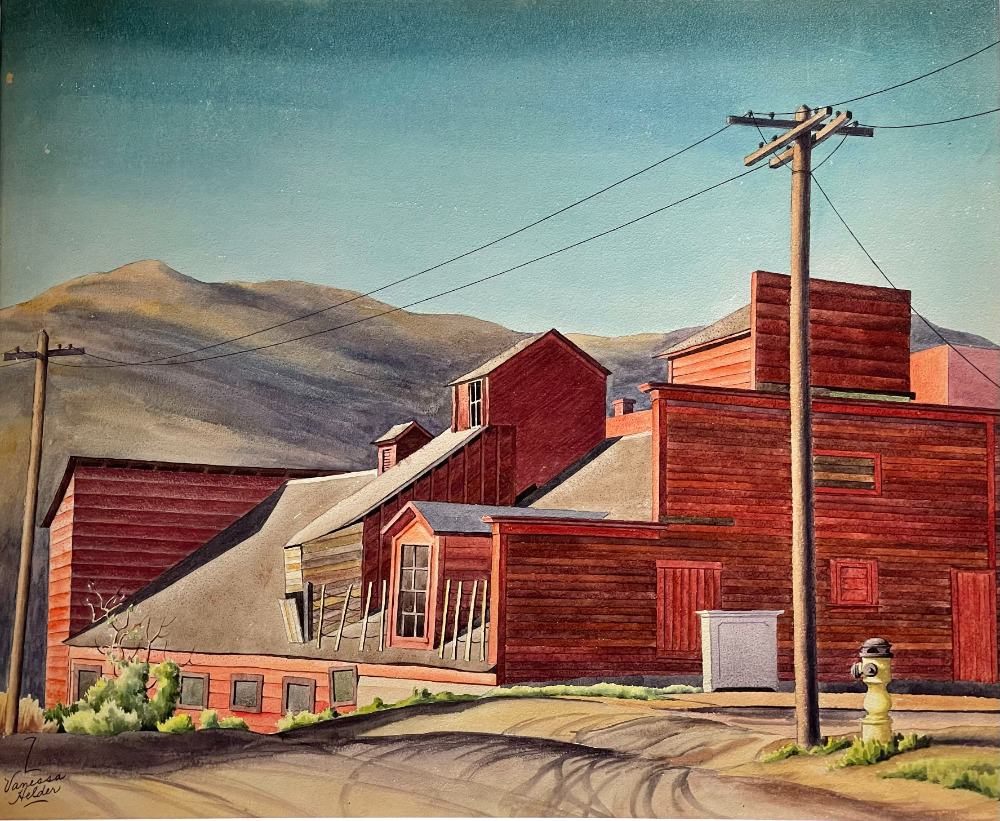
Zama Vanessa Helder (1904 Lynden, WA - 1968 LA, CA) was active/lived in Washington, California. Zama Helder is known for Regional watercolor landscapes painting, teaching.
“No other woman on the spraddling length of this Pacific Coast has had the honor currently being bestowed upon the painting talent of Vanessa Helder.” once wrote the Seattle press, “We’ll stand firmly for this distinction: She is the only woman in the Northwest to have her work hung in the Museum of Modern Art.”
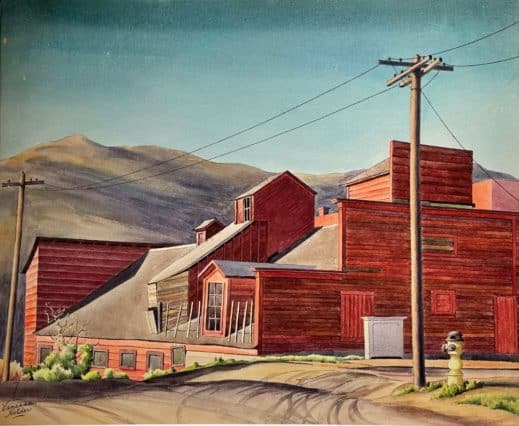
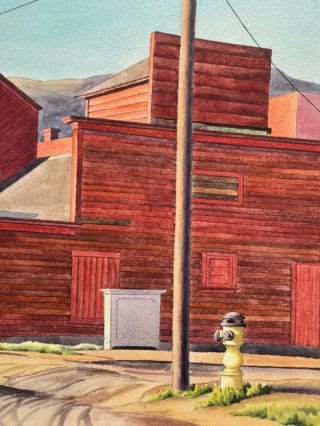
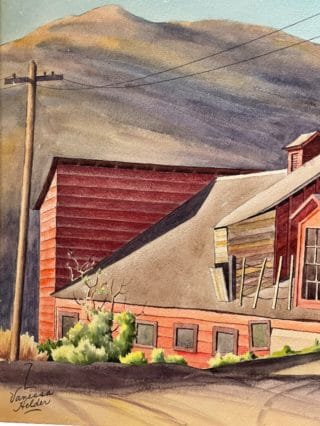
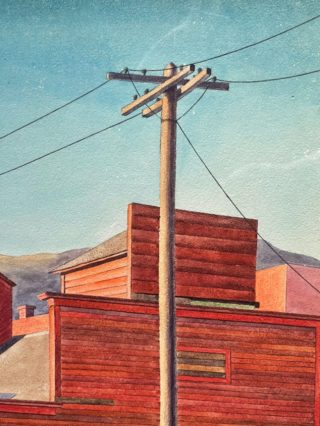
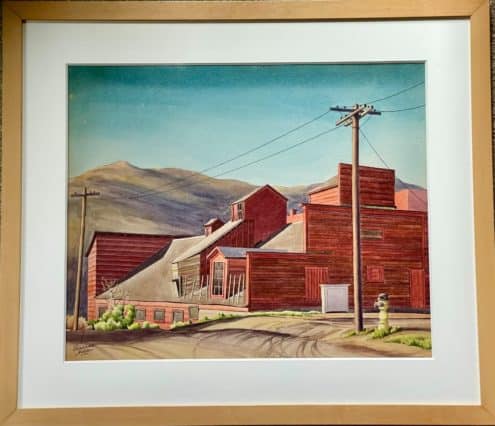
Born in Lynden, WA on May 30, 1904. After graduating from the University of Washington, Helder studied at the ASL in NYC. From 1939-41 she taught at the Spokane Art Center. In 1943 she married John S. Paterson and settled in Los Angeles where she remained. During 1952-55 she taught at the Los Angeles Art Institute. She died on May 1, 1968. Member: Women Painters of the West; Women Artists of Washington; American WC Society; Nat'l Ass'n of Women Artists. Exh: Portland (OR) Museum, 1936; SFMA, 1936, 1937; Denver Museum, 1938, 1940; Oakland Art Gallery, 1938-41; Calif. WC Society, 1940-50; San Diego FA Society, 1941; MM, 1942; MOMA, 1943; LACMA, 1945 (solo); Calif. State Fair, 1953; LA AA, 1953. In: Seattle Museum; High Museum (Atlanta); Cheney Cowles Museum (Spokane).
Z. Vanessa Helder has been exhibited at museums including the Museum of Modern Art’s 1943 exhibition "Realists & Magic Realists", the Whitney Museum, the Metropolitan Museum of Art, the Denver Art Museum, and the Seattle Art Museum and is included in collections at the National Museum of American Art, the Smithsonian Institution, the Newark Museum, the High Museum of Art, the Portland Art Museum, Portland, Oregon, the Philadelphia Museum of Art, the St. Louis Art Museum, the Academy Of Arts And Letters, Washington State University, I.B.M. Corporation, the Northwest Museum of Arts & Culture and the Whatcom Museum of History & Art.
“No other woman on the spraddling length of this Pacific Coast has had the honor currently being bestowed upon the painting talent of Vanessa Helder.” once wrote the Seattle press, “We’ll stand firmly for this distinction: She is the only woman in the Northwest to have her work hung in the Museum of Modern Art.”
Indeed, with exhibits at LACMA, MOMA, and far-reaching success among New York’s premier gallerists, Z. Vanessa Helder (1904-1968) found audience far and wide from her Northwestern home. Drifting into obscurity after her death, the artist who was once one of the most prominent early modernists of the Pacific Northwest experienced a major revival after being rediscovered and featured in the survey Austere Beauty: The Art of Z. Vanessa Helder at the Tacoma Art Museum in 2013.
Born to an artistic and somewhat eccentric family whose interests included music, theosophy, and astrology, Z. Vanessa Helder was an unconventional figure often found strolling Seattle’s streets dressed in her finest with her pet skunk in tow. Her mother was passionate about art and gave Helder her first painting lessons at a young age, eventually leading the prolific young artist to study art at the University of Washington. She kept an unorthodox school of pets throughout her life (at one time she made several inquiries with various state agencies only to find out it was illegal to own a flying squirrel) and an active social life amongst artist, architects, and bon vivants. Undertaking considerable work both teaching and supporting professional artists through the art associations that sustained Seattle and California’s vibrant art scenes before galleries and museums, Helder’s art and social life were intertwined.
In 1934 Helder moved East with a scholarship to the Art Students League of New York where her artistic style picked up precisionist influences under a number of artists including Robert Brackman, George Picken, and Frank Vincent. There she also joined the National Association of Women Painters and Sculptors as well as winning membership in the American Watercolor Society in 1943. Attracting the attention of prominent gallerists of the time such as Maynard Walker and especially Macbeth Gallery, Helder’s characteristic style and Northwestern subject matter brought her attention in exhibits at the Whitney and aforementioned MOMA while simultaneously raising interest in her friends and fellow artists such as Robert O. Engard and Blanche Morgan back home.
Moving back in Washington, Helder became a member of the Women Painters of Washington (WPW), was employed by the local branch of the federal Works Progress Administration (WPA) art programs creating murals, lithographs, and paintings, and spent two years teaching at the Spokane Art Center. It was around this period that Helder’s created one of her most well known works, a series of watercolors for the Bureau of Land Reclamation depicting the Coulee Dam during its construction, exhibited at the Seattle Art Museum in 1939.
Developing a distinct precisionist style that defied watercolor’s usual billowy brushstrokes, Helder’s tight yet airy compositions were rendered in an elegant, tempera-like finish. Her subject-matter focused mostly on winterscapes, portraits contrasting collections of natural and manufactured objects, and angular architectural structures framed by rural scenes. She enjoyed the influence of Washington artist Elizabeth Colborne, whose watercolor and woodblock prints left an impression of simple composition; her contemporaries and teachers on the East Coast, whose early modern precisionism trained her eye to industrial subjects; her husband John “Jack” Patterson, whose work as an architect gave her a special perspective; and a love of Chinese painting. Assimilating her interests into her natural talent, Helder fluidly expressed her subjects in a striking, technical style that retained a sense of atmospheric lightness on canvas.
In 1943 she followed her husband to Los Angeles as he pursued professional opportunities. There she found success, joining the board of the California Watercolor Society while continuing to exhibit old and new works in California, Washington, and New York. In addition, she maintained active involvement in the Los Angeles art associations that were the primary exhibitors of California artists at the time. However, as more abstract styles began to take precedence in painting, the watercolor master’s work fell out of favor and she exhibited less regularly before her death on May 1, 1968. Helder’s works were then donated to the Westside Jewish Community Center where they were slowly sold off over the years, leaving hundreds of works unaccounted for to this day.
Edan Hughes, "Artists in California, 1786-1940"
Who's Who in American Art 1938-62
Women Artists of the American West
Death record; Los Angeles Times, 5-4-1968 (obituary)
William A. Karges Fine Art
Independent Spirits: Women Artists of the American West, 1890-1945, by Trenton, University of CA. Press, 1995
Encyclopedia of Women Artists of the West by Kovinick & Yoshiki Kovinick, University of Texas Press